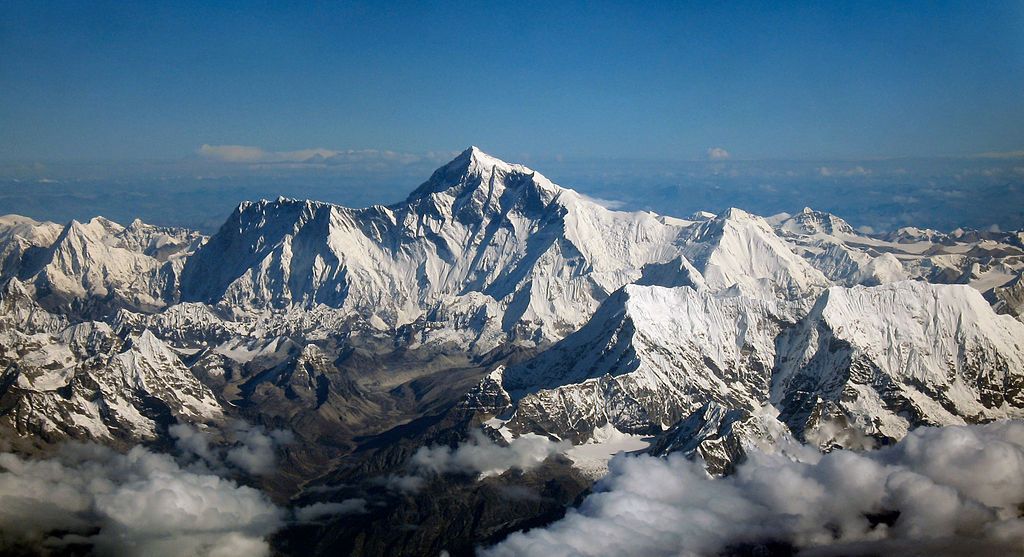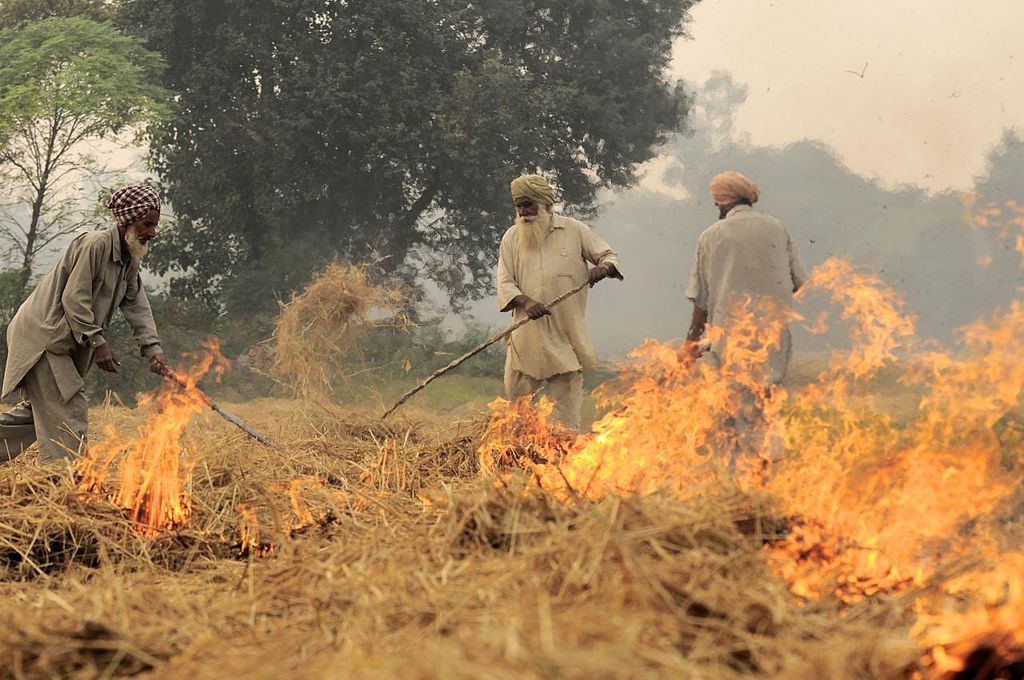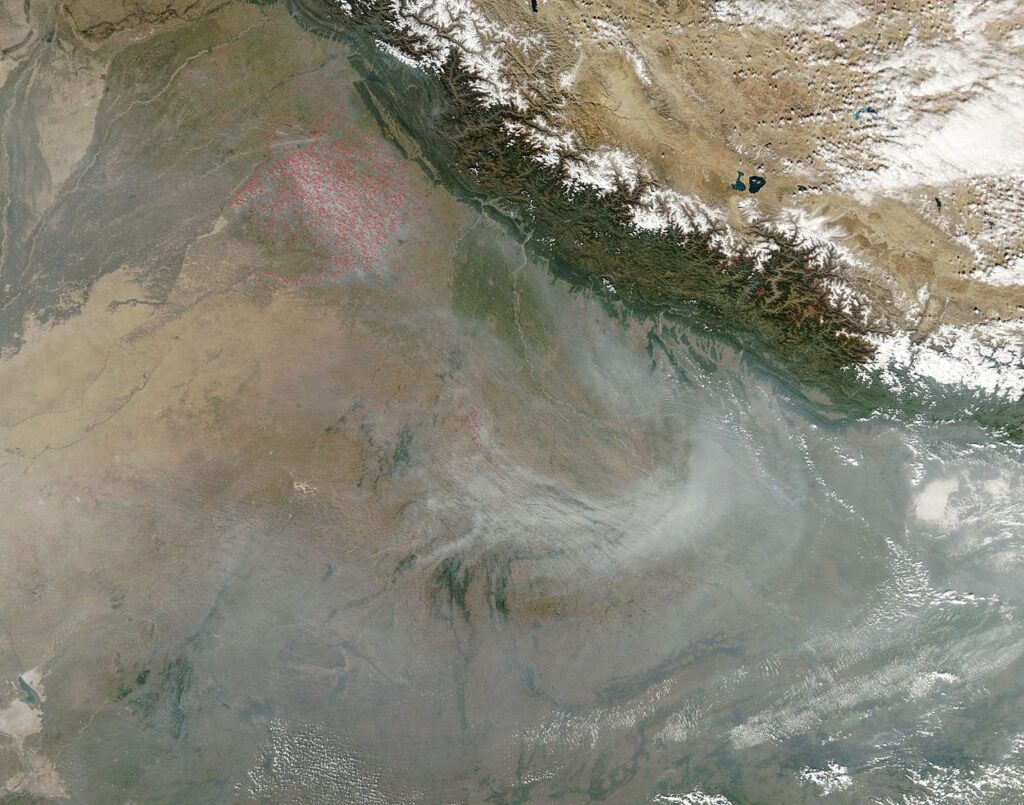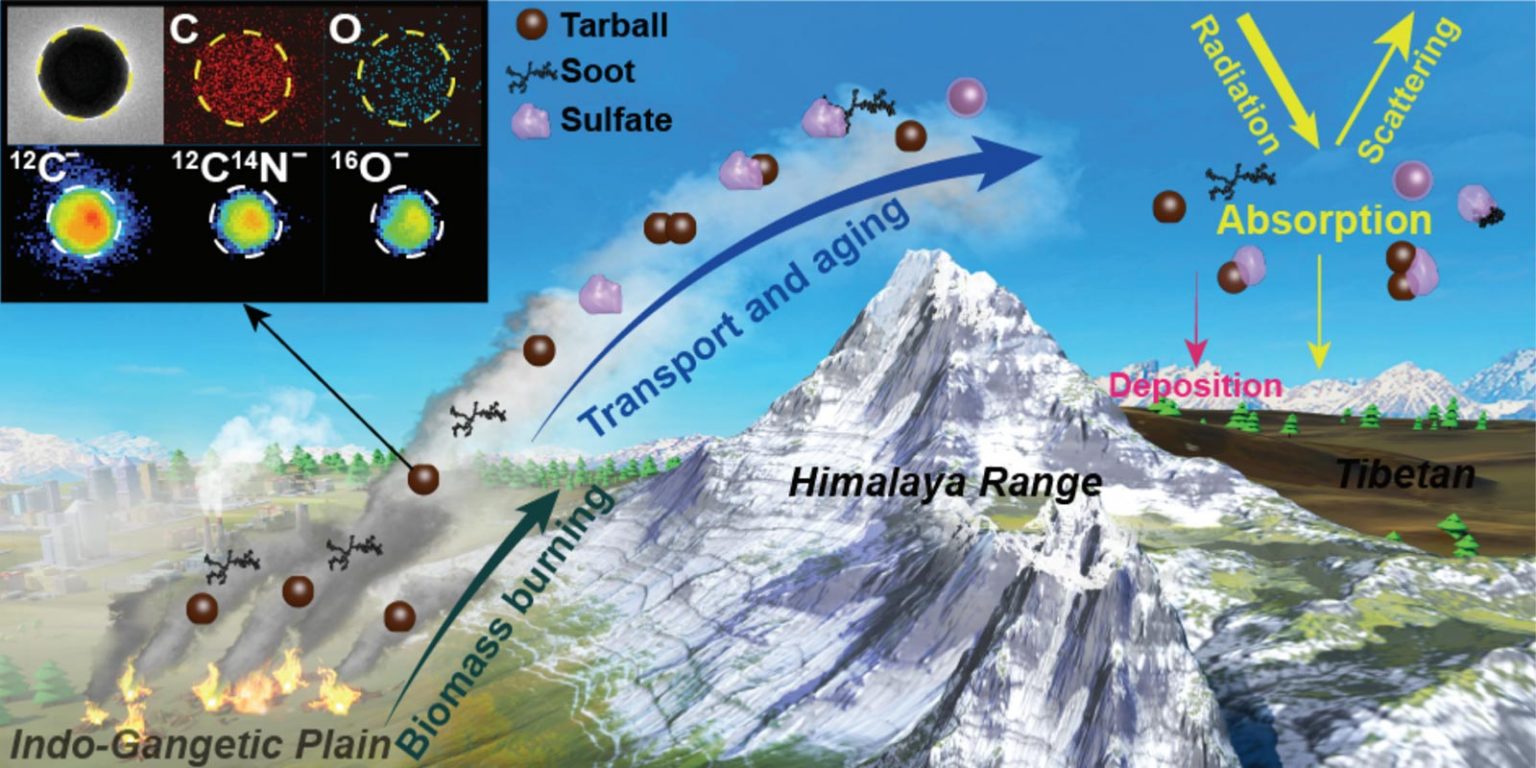
9 December 2020
Every November air pollution spikes in India as farmers in the Punjab burn their fields in preparation for the next crop. Because the practice causes terrible air pollution it was outlawed in 2015, but small farmers cannot afford to buy the machines needed to clear the fields so the practice continues year after year.

When the stubble burns Delhi is smothered in dangerous air pollution. The smoke from thousands of fires swirls high in the atmosphere and can be seen from satellites.

Meanwhile glaciers in the Himalayas have been retreating for the past decade. Scientists wondered if atmospheric carbon air pollution, landing on the white ice, was a factor in their warming. A team led by Yuan Q placed air pollution monitors in remote locations on the northern side of the Himalayas. Their report, published by the American Chemical Society on 4 November 2020, found an amazing thing:
Using electron microscopy, the researchers unexpectedly found that about 28% of the thousands of particles in the air samples from the Himalayan research station were tarballs, and the percentage increased on days with elevated levels of pollution.
— ACS.org: Brown carbon ‘tarballs’ detected in Himalayan atmosphere , 4 Nov 2020
Microscopic tarballs form from brown carbon in the smoke of organic fires — in this case, stubble burning. They are so lightweight that they travel far, rising over the Himalayas to deposit on the other side. Their dark color absorbs sunlight and causes the glaciers to melt faster.

Stubble burning is a persistent annual problem in India as shown in the 2018 video from France 24 below.
Dec 2018: Crop burning crisis: India chokes as farmers set fields on fire, France 24 News
As India’s government provides community-shared machines for clearing stubble, the burning will come to an end. Will it be soon enough for the glaciers? Probably not.
Read more in this 4 Nov 2020 press release from ACS.org: Brown carbon ‘tarballs’ detected in Himalayan atmosphere
(photos from Wikimedia Commons, chart embedded from acs.org; click on the captions to see the originals)
The study is here: Yuan Q et al. Evidence for Large Amounts of Brown Carbonaceous Tarballs in the Himalayan Atmosphere. Environmental Science & Technology Letters. Published 4 November 2020. https://doi.org/10.1021/acs.estlett.0c00735
I read your blog with my kindergartner for nature learning, thanks for keeping it so interesting and family friendly.